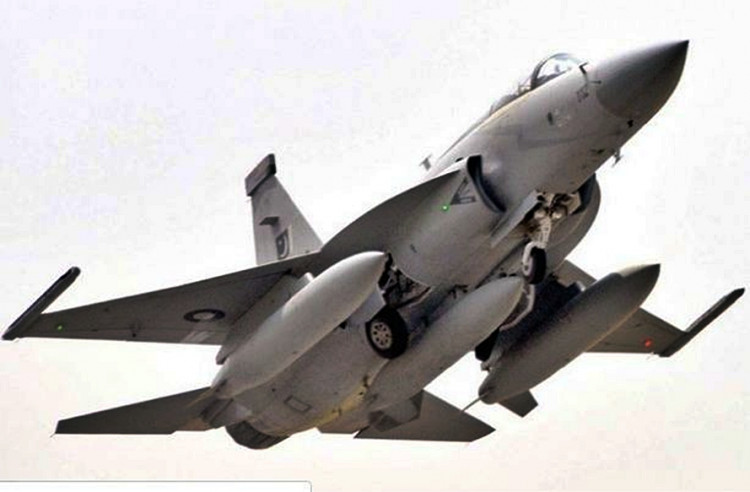China remains Pakistan's biggest arms supplier and will continue as such to prevent any instability that might lead to the overthrow of China-friendly governments in Islamabad.
Pakistan, which China's president Xi Jinping often refers to as his country's "all-weather friend," accounted for more than 40 percent of China's total arms sales from 2000 to 2017. Chinese arms sold to the Pakistan Armed Forces (PAF) are mostly big-ticket, complex -- and expensive.
The main battle tank of the Pakistan Army is the Al-Khalid, which was jointly developed by Pakistan and China during the 1990s based on the Chinese Type 90-IIM tank. The newest combat aircraft flown by the Pakistan Air Force is the PAC JF-17 Thunder, a lightweight, multi-role combat aircraft developed jointly by the Pakistan Aeronautical Complex (PAC) and the Chengdu Aircraft Corporation (CAC) of China.
The most modern warship in the Pakistan Navy is the F22P Zulfiquar-class frigate, a "multi-mission frigate" based on an updated model of the Chinese Type 053H3 frigate. This Zulfiquar-class was designed and built jointly by KESW Ltd. in Pakistan and Hudong-Zhonghua Shipbuilding in China.
The Stockholm International Peace Research Institute (SIPRI) named China the world's fifth-leading arms exporter in 2017, thanks mostly to China's weapons sales to Pakistan. Its "Trends In International Arms Transfers" report reveals the dealings of the 25 largest weapons exporters between 2013 and 2017.
SIPRI said China sold weapons to 48 countries between 2013 and 2017. For the period, China's largest client was Pakistan, which accounted for 35 percent of all sales. Bangladesh bought 19 percent of all Chinese arms sales while and Algeria took 10 percent of all sales.
Worldwide, China accounted for 5.7 percent of all arms exports. Its weapons exports jumped by 38 percent compared to the period from 2008 to 2012, said SIPRI.
The United States was again the top arms dealer from 2013 to 2017. It accounted for 34 percent of all exports. Its arms exports increased by 25 percent compared to the period from 2008 to 2012. The top U.S. weapons clients are Saudia Arabia (18 percent of all sales); the United Arab Emirates (7.4 percent of total sales) and Australia (6.7 percent of all sales).
China was also Pakistan's top arms supplier prior to 2013. Pakistan bought 42 percent of China's total arms sales from 2000 to 2014, said a report by the U.S. think-tank, the RAND Corporation. According to RAND's recently released report "Dawn of Belt and Road: China in the Developing World," China has been a key supplier of major conventional weapons to South Asian countries, especially Pakistan and Bangladesh.
Sales to both these Chinese allies accounted for more than half of total Chinese total arms sales from 2000 to 2014. RAND said China was the world's third-largest arms exporter in this period. It said the most notable Chinese sale to South Asia was the sale of JF-17 fighters to Pakistan
RAND pointed out that China continues to provide large-scale military assistance to Pakistan, including helping develop Pakistan's nuclear program. During the mid-1970s, China secretly assisted Pakistan nuclear ambitions to counter India, said RAND. Chinese assistance included the design of a nuclear weapon and the production of fissile material.
China continues to ally with Pakistan as part of its Pivotal Regional Partnership (PRP). PRP began as a way of counterbalancing India. China's close ties with Pakistan is "the linchpin of China's South Asia policy." This policy is based on three factors: ensuring China's internal stability; counterbalancing India and defending China's ballooning economic interests.
Islamabad will continue to remain an important partner for China because of the volatile nature of politics in South Asia. RAND said Pakistan's political stability and national unity is crucial to China. China believes this is the only way to ensure Pakistan remains a counterweight to India.
China is also fearful that political turmoil in this Islamic and nuclear-armed state will also threaten its stability. The disintegration and downfall of Pakistan will send shockwaves cascading far and wide.






